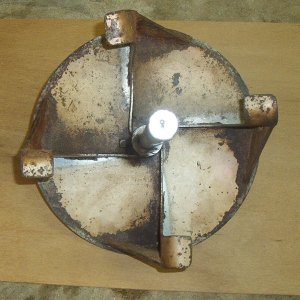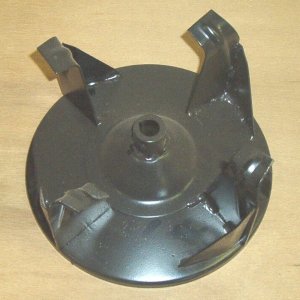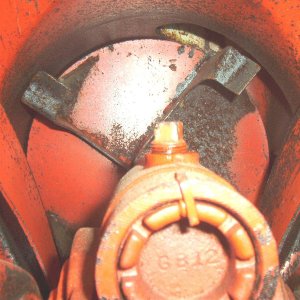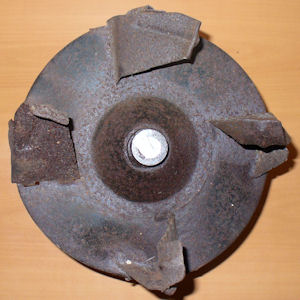
|
|
|

SNOWBLOWER SHOPPING SUGGESTIONS |
|
HOME Site Map Contact Us Except where stated this site is in no way affiliated with any of the products or companies mentioned or depicted within except as noted |
Shopping Suggestions
![]() Tractor Attachments
Tractor Attachments
![]() Buying Used
Buying Used
Suggested Supplies
- Buy a brand name from a servicing dealer. There are correct ways to set these machines up and I wouldn't count on the kid at the department store. Also if you have trouble you want a dealer who can take care of the problem.
- Buy as much machine as you can afford. 8 horsepower is a good size and in most cases I'd consider the minimum, most of my running machines are 8s. Anything less will have trouble with the deepest storms or heavy wet snow, especially if you have to deal with a wet & dense snowbank. 8HP/26 inch is a robust proportion.
- Smaller machines should only be considered for special needs. Things like roofs, narrow walkways, decks or use by someone with limited strength. If you try to do a big job with a small machine either be very patient or plan on doing a lot of the work yourself.
- If you have a gravel driveway go with a 2 stage machine. A single stage machine spins at very high speeds and will be easily damaged by a small stone jamming the wrong way. Because the auger of a 2 stage machine spins much slower the shear pins can effectively protect it. A single stage machine will also be more prone to peeling away your gravel and distributing it everywhere but on your driveway. On gravel plan on setting the skids to keep the scraper bar 3/4 inches above grade At that height even a single stage attachment on a tractor will be OK as long as the driveway was well graded before the frost.
|
Think before you buy. I'm talking here about the proliferation of powered accessories on some
machines, things like powered chute rotation and cable or power adjusted chute deflectors. Weigh
the benefits of these features. Anything that doesn't directly contribute to getting the job done
will at some point fail and cost you money and perhaps leave you shoveling.
That's my opinion.
|
- Here is a table to help you compare different machines. It's not going to be absolute however since some machines are more efficient than others. A 2 cycle single stage compact machine will do what it can do with 3 horsepower but the ratio is not as bad as it seems. For one thing you are pushing the machine around, that saves some power for moving snow.
| INCHES PER HORSEPOWER TABLE | ||||||||||||
| A LOWER VALUE SUGGESTS A MORE ROBUST MACHINE | ||||||||||||
| HORSEPOWER | ||||||||||||
| 3 | 4 | 5 | 6 | 7 | 8 | 9 | 10 | 11 | 12 | 13 | ||
| WIDTH | 18 | 6.0 | 4.5 | 3.6 | 3.0 | 2.6 | 2.3 | 2.0 | 1.8 | 1.6 | 1.5 | 1.4 |
| 19 | 6.3 | 4.8 | 3.8 | 3.2 | 2.7 | 2.4 | 2.1 | 1.9 | 1.7 | 1.6 | 1.5 | |
| 20 | 6.7 | 5.0 | 4.0 | 3.3 | 2.9 | 2.5 | 2.2 | 2.0 | 1.8 | 1.7 | 1.5 | |
| 21 | 7.0 | 5.3 | 4.2 | 3.5 | 3.0 | 2.6 | 2.3 | 2.1 | 1.9 | 1.8 | 1.6 | |
| 22 | 7.3 | 5.5 | 4.4 | 3.7 | 3.1 | 2.8 | 2.4 | 2.2 | 2.0 | 1.8 | 1.7 | |
| 23 | 7.7 | 5.8 | 4.6 | 3.8 | 3.3 | 2.9 | 2.6 | 2.3 | 2.1 | 1.9 | 1.8 | |
| 24 | 8.0 | 6.0 | 4.8 | 4.0 | 3.4 | 3.0 | 2.7 | 2.4 | 2.2 | 2.0 | 1.8 | |
| 25 | 8.3 | 6.3 | 5.0 | 4.2 | 3.6 | 3.1 | 2.8 | 2.5 | 2.3 | 2.1 | 1.9 | |
| 26 | 8.7 | 6.5 | 5.2 | 4.3 | 3.7 | 3.3 | 2.9 | 2.6 | 2.4 | 2.2 | 2.0 | |
| 27 | 9.0 | 6.8 | 5.4 | 4.5 | 3.9 | 3.4 | 3.0 | 2.7 | 2.5 | 2.3 | 2.1 | |
| 28 | 9.3 | 7.0 | 5.6 | 4.7 | 4.0 | 3.5 | 3.1 | 2.8 | 2.5 | 2.3 | 2.2 | |
| 29 | 9.7 | 7.3 | 5.8 | 4.8 | 4.1 | 3.6 | 3.2 | 2.9 | 2.6 | 2.4 | 2.2 | |
| 30 | 10.0 | 7.5 | 6.0 | 5.0 | 4.3 | 3.8 | 3.3 | 3.0 | 2.7 | 2.5 | 2.3 | |
| 31 | 10.3 | 7.8 | 6.2 | 5.2 | 4.4 | 3.9 | 3.4 | 3.1 | 2.8 | 2.6 | 2.4 | |
| 32 | 10.7 | 8.0 | 6.4 | 5.3 | 4.6 | 4.0 | 3.6 | 3.2 | 2.9 | 2.7 | 2.5 | |
| 33 | 11.0 | 8.3 | 6.6 | 5.5 | 4.7 | 4.1 | 3.7 | 3.3 | 3.0 | 2.8 | 2.5 | |
| 34 | 11.3 | 8.5 | 6.8 | 5.7 | 4.9 | 4.3 | 3.8 | 3.4 | 3.1 | 2.8 | 2.6 | |
| 35 | 11.7 | 8.8 | 7.0 | 5.8 | 5.0 | 4.4 | 3.9 | 3.5 | 3.2 | 2.9 | 2.7 | |
| 36 | 12.0 | 9.0 | 7.2 | 6.0 | 5.1 | 4.5 | 4.0 | 3.6 | 3.3 | 3.0 | 2.8 | |
- Operating a snowblower requires some manhandling, grab the handles and twist and rock, if they creak like a cheesy lawnchair be wary.
- Look down at the lower end of the machine, things should be either welded or bolted, if you see sheet metal screws be wary.
- An electric start is nice if you have limited strength or your engine is not up to par. A good arm should be able to start a cold machine in 1 to 3 pulls. Remember that most starters are powered by house current and will only be usable with a power source nearby. If this is important you will want to find one with a battery system or stock up on extension cords. It's a fairly strong motor so check the manual for extension cord recomendations.
- There should be shear pins to protect the snow handling components. Ask to see where they are and make sure you will be able to handle replacing them when needed. I prefer loose fitting pins or bolts over the types that press in tightly. Keep spares on hand, a machines will usually come with a few.
- Long standing quality brand names are HONDA, SIMPLICITY, TORO and ARIENS. See my Links page.
- SEARS, MTD, YARDMAN, MURRAY etc. are so so at best.
- Regarding tires versus track style drive trains....My biased opinion is that I think it's a
fad, probably concieved by a testosterone poisoned fan of Tool Time. A good "agricultural" or
Chevron pattern tire (like a goad grader or big front end loader) is perfecty adequate and
infinitely simpler over the life of the machine. I have two concerns about the tracks.
- They add a number of parts to the machine and bring the the associated maintenance burden. Be sure to consider this in terms of cost and parts availability in the out years.
- Due to the greater surface area they will be difficult for handle on all but the snowiest or iciest surfaces. This implies the need for a power turn feature and the use of it and you guessed it, more moving parts! Be sure to consider the strength of all potential operators.
- Some time ago I came across an industry life expectancy figure of 11 years for a snowblower. I know that with care and attention that can be greatly exceeded, my favorite and most frequently used machine is over 30 years old. Keep this in mind when shopping and try to think in terms of "cost per year" if you can come up with the cash it will make the price of a good machine easier to swallow.
- If you are considering a used machine be prepared to pay for a good one. I've seen 15 year old machines selling for what they sold for when new!
- You can't go wrong with a Briggs and Stratton engine. Tecumseh engines are prone to throwing piston rods through the crankcase wall if the oil level drops at all. The Tecumseh speed control is not nearly as robust as the Briggs and Stratton either. Briggs & Stratton is now back in the snow blower engine business in a big way with overhead valve engines ranging from 6.5 through 13 horsepower. Given prices, contracts and market inertia it's anybody's guess how quickly they will regain market share. However if you shop around machines can be found with these engines.
- The best engines going forward are of the overhead valve (OHV) design. They are more efficient and will have the best parts availability in the out years since the classic "L-Head" (side valve) designs are being phased out.
- If you're considering a used machine here are some thoughts on that topics
TRACTOR ATTACHMENTS
The idea of having a snowblower attachment on the front of your tractor sounds like a lot of fun
and if you have a big enough machine frankly it is a lot of fun, at least for a while. In general I
feel you're better off with a separate walk behind snowblower for your winter clean-up chores
unless you have a tractor big enough to handle a rear mounted blower. Based on having used quite a
few attachments on a range of tractor sizes here are some thoughts.
Buying Used
One alternative to buying a new machine can of course be buying a used unit. These purchases fall
into several categories. Dealers will sell used machines, sometimes with a short term warranty. In
some cases you can get a trade in machine in an "as is" transaction. The other option is a private
sale. In this case you may see an advertisment in a classifed section, spot a machine with a sign
at the end of a driveway or even hear of one by word of mouth.
The machines bought from a dealer with a warranty will of course carry a heftier price tag. I
frequently see asking prices that are 50% to 75% of what a machine may have sold for 25 years ago!
Given inflation this may mean paying $300. for a vintage machine that is strudier than most of what
you can get today for 3-4 times that price. If you trust your instincts and are prepared to take
care of such a machine it can be a decent value. The same machine in a private sale will probably
sell for less than half of the above price. The difference being that you assume the risk and
nothing special has been done to prepare it for continued service. Finally if you get a machine
that is essentially OK but needs some element of work before it's fit for service you should expect
to pay well under $100.
During my years in the buisness and now as a collector I have had a chance to spend quality time
with many machines and a vintage machine that's entirely in it's original configuration is rare. Be
on the lookout for home made replacement parts and other home brew modifications. On a newer
machine you should expect it to be entirely factory with normal wear and tear.
Below I will outline some key things to look for when considering a used machine. The bulk of my
experience is with Gilson machines but most of this will be universal. In addition to this section
I strongly recommend reading my FAQ page and my draft of
a Servicing Procedure, it points out many items I
look for when doing triage and when I go through a machine to get it ready for front line service.
If you're not comfortable checking these details then maybe you should see if you can get your
outdoor power equipment technician to look the machine over or maybe buying used isn't your best
choice.
It Gilson # 10408 and became cross referenced to LawnBoy/Toro # 741218. Check here for replacement information.
It was Gilson # 14849 and became cross referenced to LawnBoy/Toro # 740011. Check here for replacement information.
So there... do what you can. Not everything above is a cause to black ball a machine. It all
depends what you want, what you're paying and what you are capable of repairing. I've only tried to
give you some guidelines of things to watch for after that use your common sense and take your
chances.
So that's my opinion. You will see a lot of attachments in use and on a decent machine within the
limitations I mention above they do work. In my eye's they usually are not the way to go.
I hope this page is helping you to make a more informed decision. Perhaps you will avoid an expensive mistake and end up with an appropriate machine for your property that provides many years of service. If your reading here has been of value to you I hope you will consider leaving a token of your appreciation in the form of a donation to help support this site. Good luck with your purchase.



